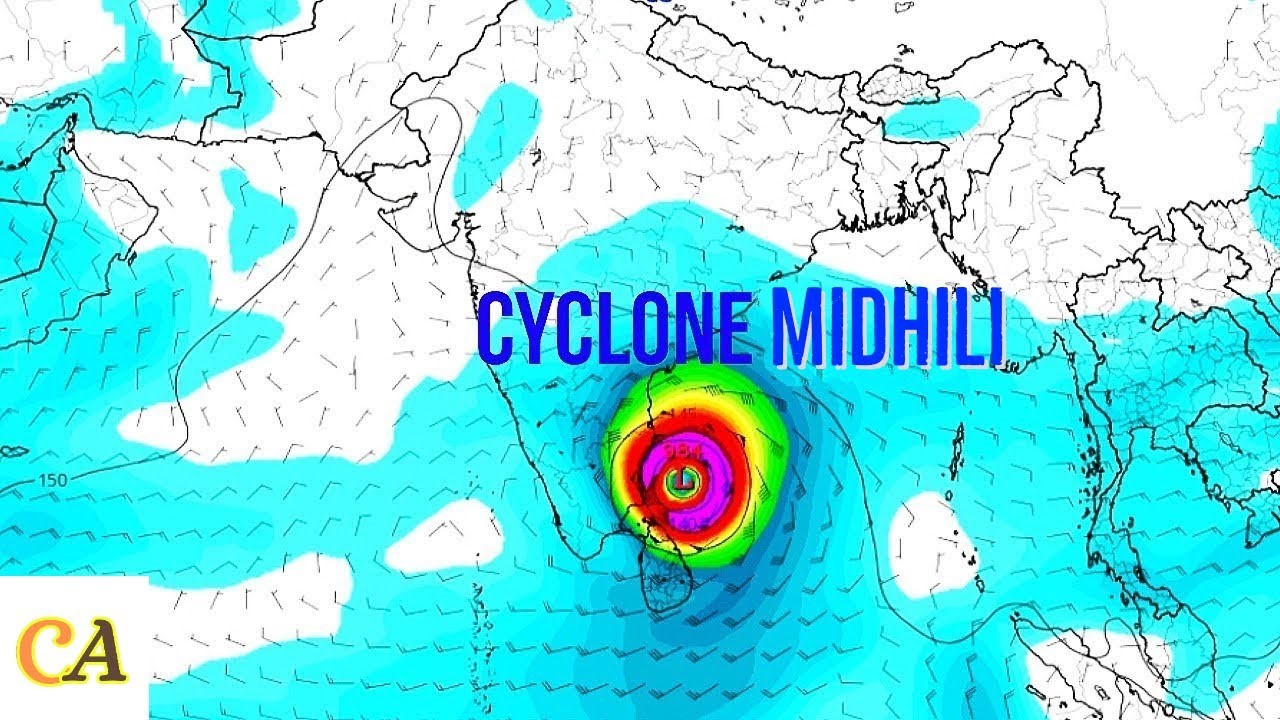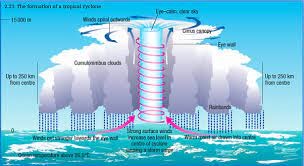Description

Disclaimer: Copyright infringement not intended.
Context
- The Indian Meteorological Department (IMD) declared about the development of Cyclone Midhili in the northwest Bay of Bengal.
- Under the influence of Cyclone Midhili, heavy rainfall is forecasted in the coastal regions of Odisha, West Bengal, Tripura, and Mizoram with wind speed blowing in the range between 40 kmph and 70 kmph.
Details

Cyclones
- A cyclone is defined as a rapid inward air circulation in and around a low-pressure (LP) area.
- They are limited to the atmosphere between 30° N and 30° S latitudes.
- India's Cyclones: Tropical cyclones form in the North Indian Ocean during the pre-monsoon (April-June) and post-monsoon (October-December)
Conditions for the formation of a tropical cyclone:
- A large and constant supply of warm and moist air is required for the creation of a tropical cyclone.
- Strong Coriolis force that can prevent low pressure at the centre from filling.
- Unstable condition that causes local disruptions.
- There is no strong vertical wind wedge to interfere with the vertical transmission of latent heat.

Formation of cyclones:
- Tropical cyclones form only over warm ocean waters near the equator.
- To form a cyclone, warm, moist air over the ocean rises upward from near the surface.
- As this air moves up and away from the ocean surface, it leaves less air near the surface. So basically, as the warm air rises, it causes an area of lower air pressure below.
- Air from surrounding areas with higher air pressure pushes into the low-pressure area. Then this new “cool” air becomes warm and moist and rises, too. And the cycle continues.
- As the warmed, moist air rises and cools the water in the air forms clouds.
- The whole system of clouds and wind spins and grows, fed by the ocean’s heat and water evaporating from the ocean surface.
- As the storm system rotates faster and faster, an eye forms in the center.
- It is very calm and clear in the eye, with very low air pressure. Higher-pressure air from above flows down into the eye.
- When the winds in the rotating storm reach 39 mph (63 kph), the storm is called a “tropical storm”.
- And when the wind speeds reach 74 mph (119 kph), the storm is officially a “tropical cyclone”.
- Tropical cyclones usually weaken when they hit land because they are no longer being “fed” by the energy from the warm ocean waters.
- However, they often move far inland, dumping many centimeters of rain and causing lots of wind damage before they die out completely.
- The name ‘Midhili’ was given by the
Types of Cyclones
- Cyclones in the North Indian Ocean are typically categorized into various types based on their characteristics.
- Understanding these distinctions is crucial for preparedness and mitigation efforts.
Tropical Cyclones
- Tropical cyclones, often referred to as hurricanes or typhoons in other parts of the world, are one of the most destructive types of cyclones.
- They are characterized by strong winds exceeding 74 miles per hour (119 kilometers per hour) and heavy rainfall.
- The North Indian Ocean witnesses its share of tropical cyclones, which could result in widespread devastation.
Severe Cyclonic Storms
- Severe cyclonic storms are at the next level of intensity.
- These storms have even stronger winds and more significant potential for destruction.
- They often lead to storm surges, which can inundate coastal areas, causing severe flooding.
.jpg)
Very Severe Cyclonic Storms
- As the name suggests, very severe cyclonic storms are even more powerful and can result in extreme wind speeds and torrential rainfall.
- The impact of these storms is often catastrophic, affecting not only coastal regions but also areas further inland.
Super Cyclones
- Super cyclones are the most intense and destructive cyclones in the North Indian Ocean.
- They are characterized by wind speeds exceeding 131 miles per hour (211 kilometres per hour) and are capable of causing widespread devastation, including damage to infrastructure and loss of life.
|
PRACTICE QUESTION
Evaluate the role of technological advancements and early warning systems in mitigating the impact of cyclones. Furthermore, analyze the policy measures and international collaborations necessary for building resilience and sustainable recovery in cyclone-prone regions.
|












